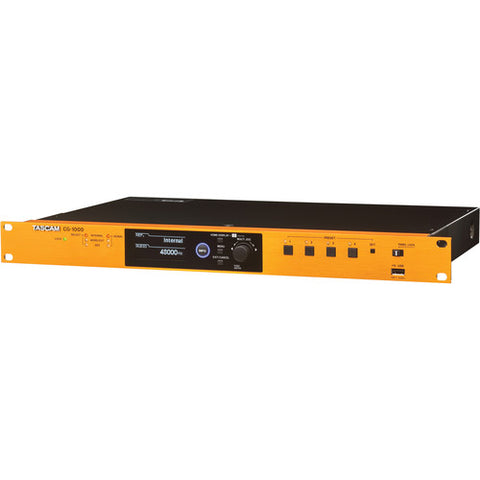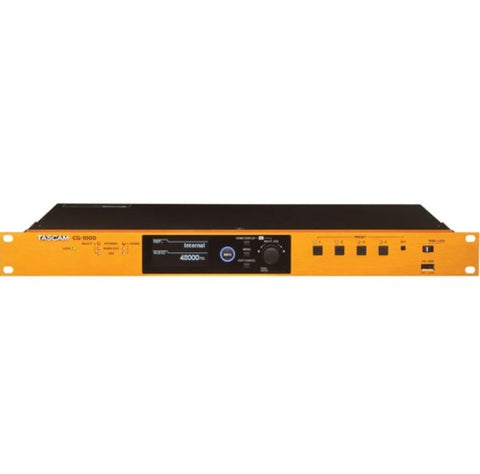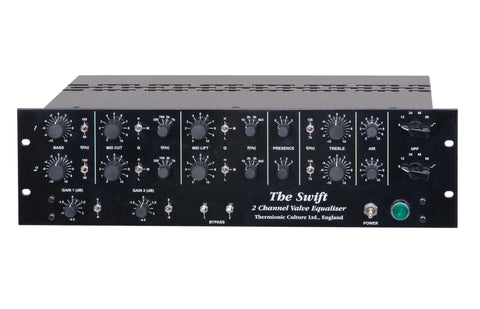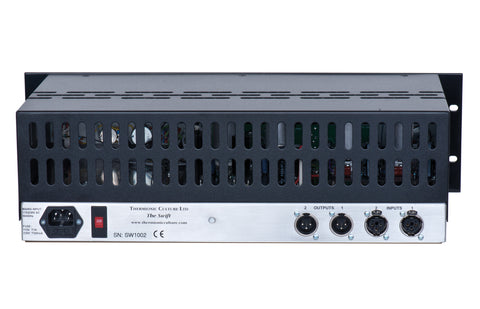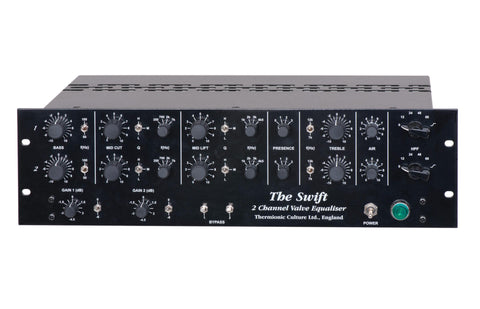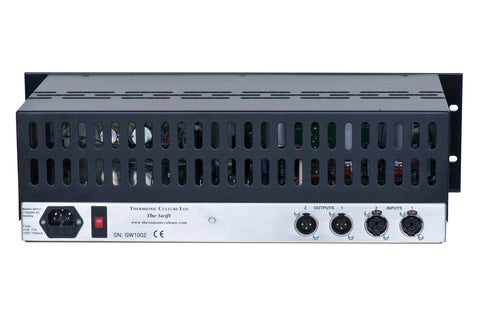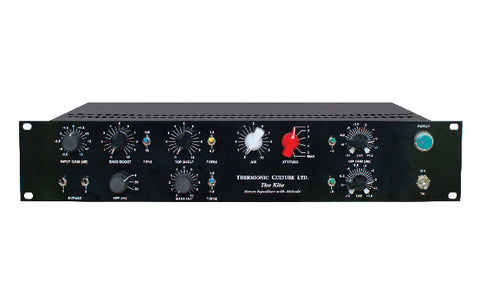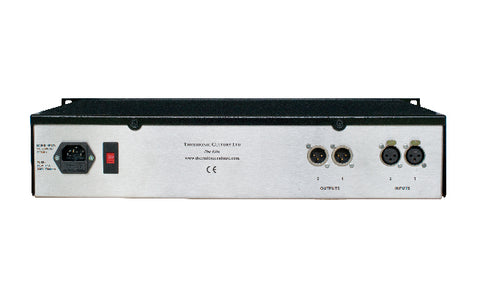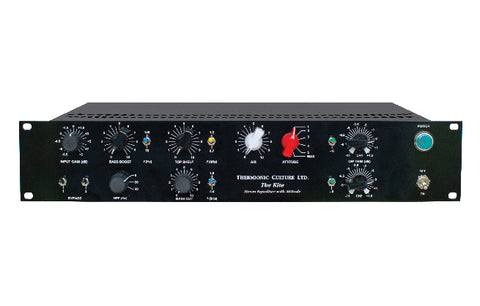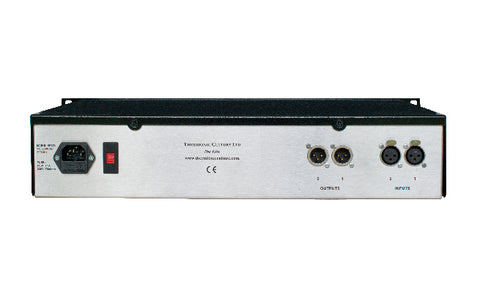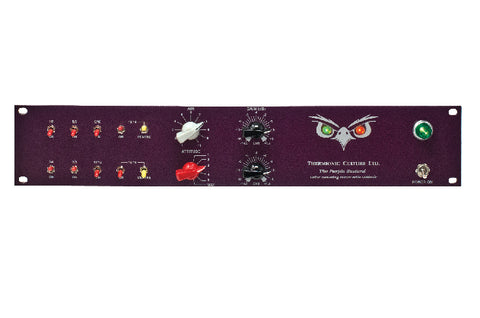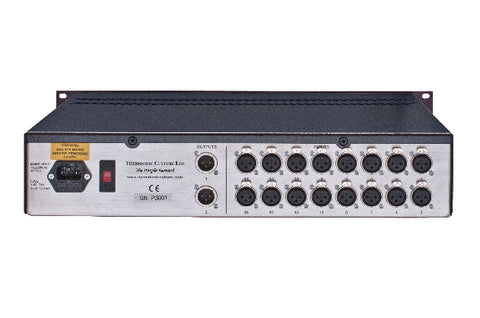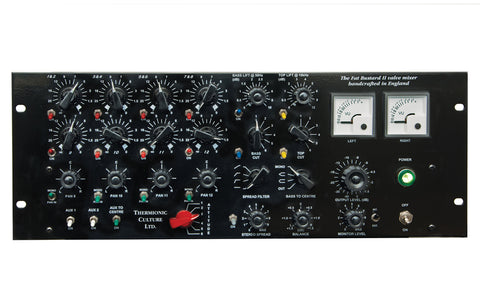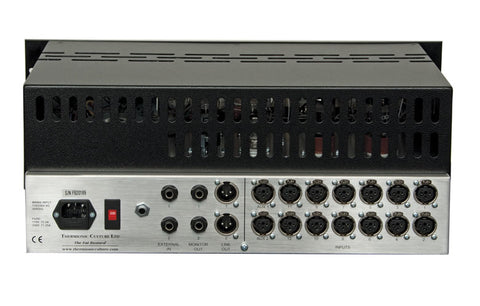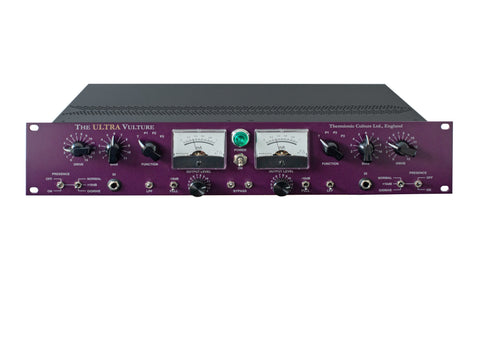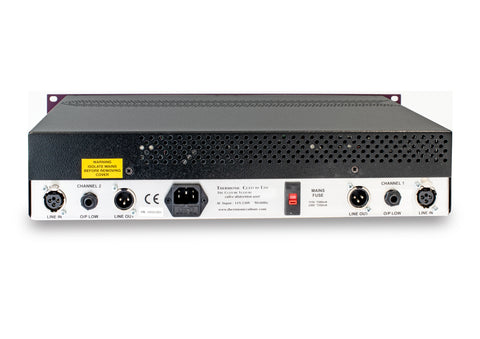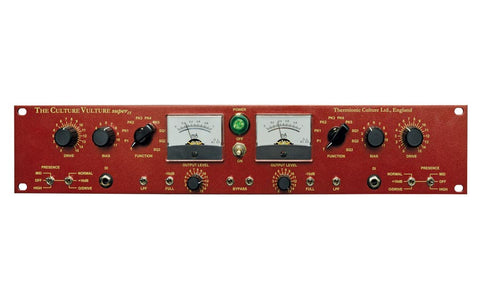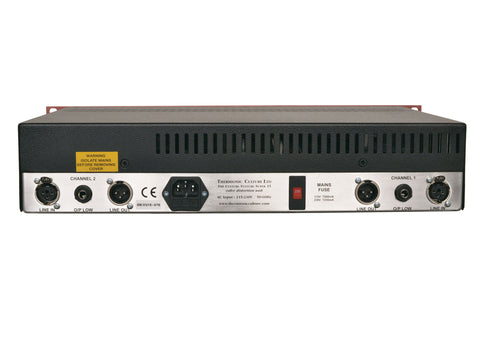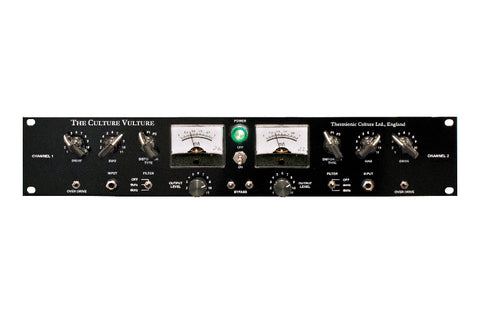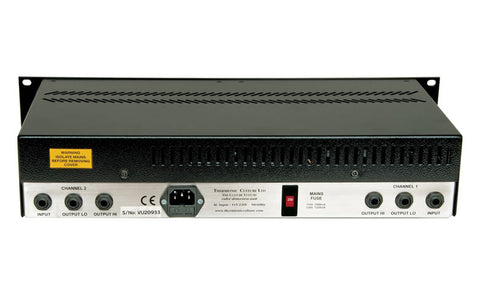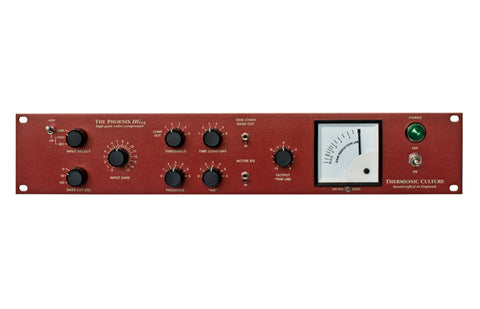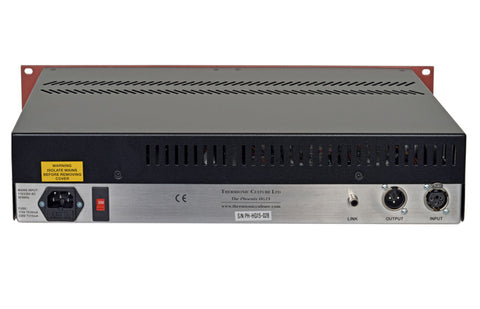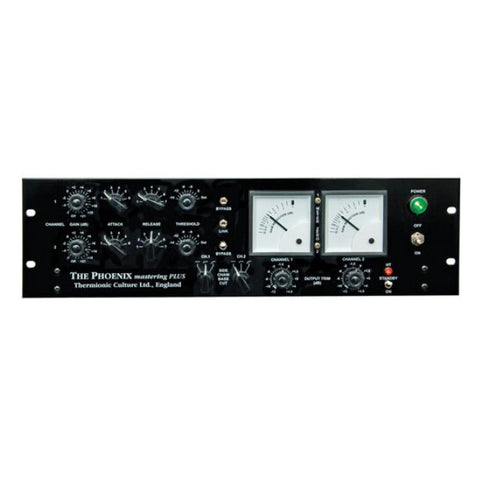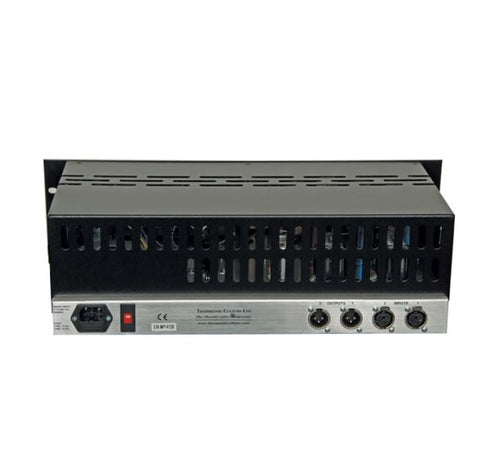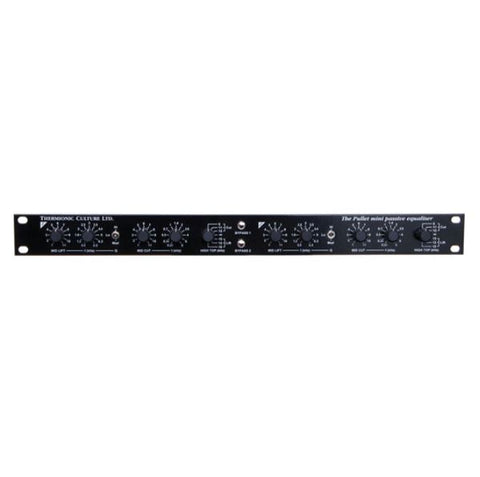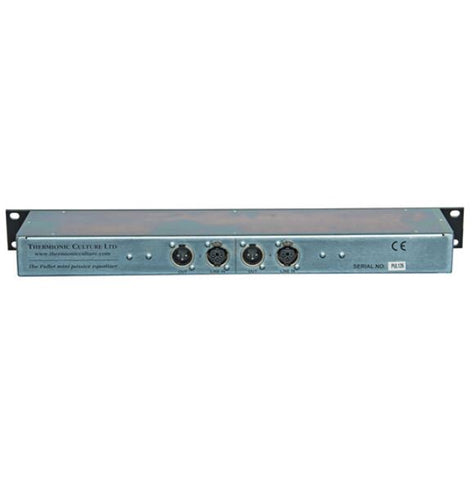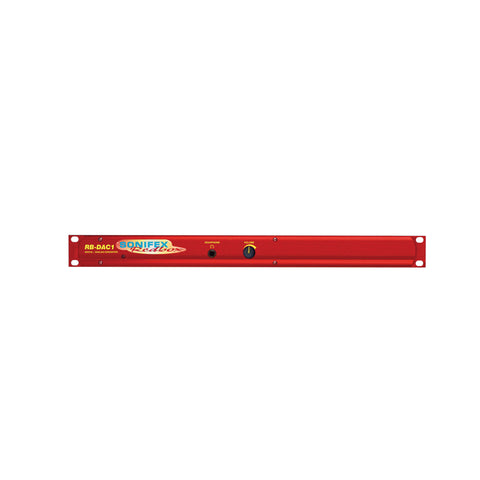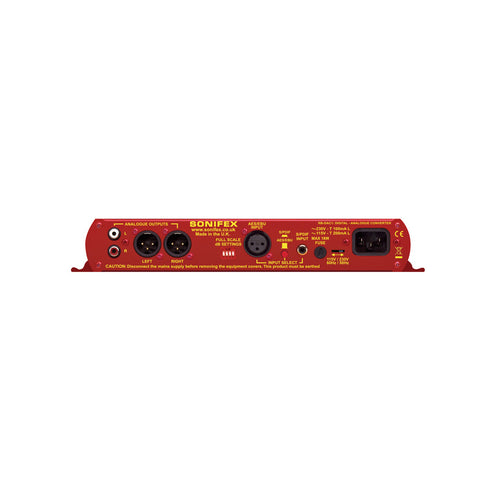RME HDSPe MADI FX 390-Channel 24 Bit/192 kHz Triple MADI PCI Express Card HDSP MADI-FX
Vendor: RME
Available

RME HDSPe MADI FX 390-Channel 24 Bit/192 kHz Triple MADI PCI Express Card HDSP MADI-FX
The HDSPe MADI FX designed by RME is a two-card, compact PCIe solution for transmitting a huge number of audio channels using the MADI protocol. It utilizes two optical and one coaxial set of inputs and outputs, the cards are capable to deliver 194 input & 196 output channels when used in conjunction with the 2-channel AES/EBU I/O and the analog monitor output. Wordclock connection and four MIDI I/Os are also available, and only a single PCIe slot is needed on the motherboard, plus one free slot opening on the case.
Not only does the system provide an impressive input and output count, but the included TotalMix FX software features a 4,096-channel mixer with a 192 kHz effects engine that allows latency-free monitoring with numerous effects like EQs, compressors, reverb, and echo, rendered directly on the hardware of the card and independent of the DAW software being used. MIDI is integrated and provides comprehensive remote control, while Wordclock I/O includes switchable termination. Additionally, a complete set of diagnostic and monitoring software is available.
Overview
- Two-card PCIe solution for transmitting a huge number of audio channels using the MADI protocol
- 194 input and 196 output channels when used in conjunction with the two-channel AES/EBU I/O and the analog monitor output
- Wordclock connection and four MIDI I/Os
- Only a single PCIe slot is required on the motherboard, plus one free slot opening on the case
- Efficiency technology automatically deactivates currently unused channels, so that they require no processing power or bandwidth
- Special version of TotalMix FX allows using the enormous channel count in an efficient and practical manner and ensures that the 4,096-channel mixer of the MADI FX responds just as smoothly as its 1,800-channel counterpart in the Fireface UFX
- Faster DSP allows for a greater number of EQs and compressors
- To enable ergonomic handling of the enormous number of channels, an option makes it possible to visually hide unused channels
- Complete "Hide setups" can be saved at any time, and switched with a simple mouse click
- The 192 kHz RME effects engine allows latency-free monitoring with numerous effects like EQs, compressors, reverb, and echo, rendered directly on the hardware of the card and independent of the DAW software being used
- TotalMix matrix allows for using the card as powerful MADI router, with the ability to route each channel individually, even with separate level settings for each routing
- Seamless Redundancy Operation utilizes the three MADI receivers to provide state-of-the-art fail safe operation with seamless switching in the event of failure
- Includes SteadyClock active jitter suppression, and DIGICheck meter and analysis toolbox (including EBU R128 metering)
- Nearly identical operation of the card under Windows and Mac OS
Inputs and Outputs
3 x MADI I/O
- Two optical and one coaxial MADI I/O (SC industry standard optical connectors, coaxial configured as 75Ω BNC)
- 192 inputs and 192 outputs simultaneously available at 44.1 and 48 kHz, 96 inputs and 96 outputs at 96 kHz, and 48 inputs and 48 outputs at 192 kHz
- In general, two optical MADI-I/Os are adequate to implement a major studio or live setup with long cable lengths, whereas the additional coaxial MADI I/O provides maximum flexibility and provides in-the-box conversion between both formats
Analog Monitoring Output
- Low-latency, reference quality analog stereo output, ideally suited to high- and low-impedance headphones
- Using the monitoring features of TotalMix, any input channel, recorded tracks, or complex sub-mixes can be selected for listening
- Cue function allows each of the 98 possible stereo sub-mixes to be monitored with a single mouse click
AES/EBU I/O
- Digital input/output in the professional AES/EBU format for those who work with additional AES/EBU devices and would like to easily connect them to their DAW
- Allows the connection of a simple AD/DA converter (e.g. RME's ADI-2 for example) to get a second monitoring output, or to create a talkback setup
- Easily connect an external digital effects unit
- The AES/EBU I/O can also be used for synchronization, e.g. with Steinberg's synchronizer and clock device, the Nuendo Sync Station
- Four MIDI I/Os - one via the external breakout cable, the other three internal as virtual MIDI ports, one for each MADI I/O
- Each MADI I/O owns a virtual MIDI I/O in the operating system that can be addressed by any MIDI program
- MIDI signals are transmitted through the same lines and distances as the MADI data, with the MIDI signals able to be played back from RME MADI devices via a standard MIDI DIN port
- Allows remote control of all RME MADI devices, including monitoring and configuring a device's complete status
- All units can be programmed with their own ID, allowing independent remote control of multiple devices via a single MIDI channel
- Makes MADI transmission across large distances practical, such as when host computers and devices are far from each other, as for example FOH and stage
- RME provides free Windows and Mac software to control all RME MADI devices - this "MIDI Remote" can use any existing MIDI port within the system to remotely control and monitor all connected devices
- The software provides both a front-panel like operation and an extended Matrix display
- Wordclock I/O with switchable termination
- The MADI FX card uses SteadyClock to extract the reference clock directly from the MADI signal, while reducing possible jitter to a minimum, making long-distance connections even more convenient
- Wordclock input processes signals automatically in single, double or quad speed
RME HDSPe MADI FX
-
Card: Type
1-Lane PCI Express Endpoint device (no PCI Express to PCI Bridge), revision 1.1
Line Speed
2.5 Gbps
Communication
Packet-based full-duplex (up to 500 MB/s transfer rate)
-
Sync Source: MADI coaxial
MADI optical
AES/EBU
Wordclock
Internal
-
Vari Pitch Control: Input signal or Wordclock
-
Sample Rates: Internal: 44.1, 48, 88.2, 96, 176.4 and 192 kHz, variable (Sync/Wordclock)
Lock range MADI: 32 to 96 kHz
Lock range WC: 27 to 200 kHz
-
Jitter: Performance
<1 ns, internal and all inputs
Sensitivity
PLL operates even at 100 ns Jitter without problems
-
Wordclock: Input
Signal Adaptation Circuit (functional from 1.2 Vpp input signal), switchable termination
Output
BNC, low-impedance driver stage, 4 Vpp into 75Ω, short-circuit-proof
-
MIDI: 2 x 5-pin DIN input, output (on breakout cable)
-
Headphone Output: Channel Separation: > 100 dB
Output Impedance: 75Ω
Output Level: +13 dBu @ 0 dBFS
Connector: 1 x 1/4" TRS
-
Drivers: Mac OS X Intel (Core Audio), 10.6 or up
Windows XP SP2, Vista, Windows 7 (32- and 64-bit)
Packaging Info
-
Package Weight: 2 lb
-
Box Dimensions (LxWxH): 11.7 x 6.8 x 3.9"
 USD
USD EUR
EUR
 AUD
AUD
 GBP
GBP
 JPY
JPY




